This article examines essential aspects of using HDMI cameras for Zoom meetings. It explains various HDMI connector types, outlines important factors for selecting the right camera and cable, and offers practical troubleshooting tips. In addition, the piece provides detailed reviews of leading HDMI camera models, offering valuable insights for users looking to upgrade their video conferencing equipment and achieve superior visual performance in professional settings.
Have you ever sat through a Zoom meeting and thought, “My camera just isn’t cutting it”? I know I have. In today’s world, where remote work, online classes, and virtual conferences have become the norm, having a reliable and high-quality camera is a must. Whether you’re an entrepreneur, educator, or team leader, the clarity of your video feed can make all the difference in how you’re perceived. That’s why I decided to dive deep into the world of HDMI cameras, especially those designed for Zoom meetings.
In this post, I’ll walk you through everything you need to know about HDMI cameras—from understanding the different types of HDMI outputs that cameras usually use, to helping you choose the right cable for your device, and even reviewing some of the best HDMI streaming cameras on the market. I’ve put together all my research, hands-on experiences, and a dash of personal insight to help you make an informed decision.
Let’s get started!
Which HDMI Does Cameras Usually Use?
If you’ve ever picked up a camera for a video conference, you might have been overwhelmed by the various HDMI types and connectors. I’ve been there, scratching my head, wondering which one is the right fit for my setup. Here’s a friendly breakdown to help clear the confusion.
What does HDMI Camera mean?
HDMI (High-Definition Multimedia Interface) is the standard for transmitting high-definition video and audio from your camera to a display or streaming device. However, not all HDMI ports are created equal. Cameras usually come with one of three types of HDMI connectors:
- Standard HDMI (Type A): Often found on larger devices, this connector is typically used for TVs and larger displays. It’s robust and designed for high-bandwidth tasks.
- Mini HDMI (Type C): A slightly smaller version of the standard HDMI, Mini HDMI is common on high-end cameras and some laptops. It provides the same quality output as a standard HDMI port, but in a more compact form factor.
- Micro HDMI (Type D): Even smaller than Mini HDMI, this port is usually found on ultra-compact devices and some professional cameras. It’s great for keeping your setup lightweight without sacrificing quality.
Key Considerations for Choosing the Right HDMI Camera
When selecting an HDMI camera for your Zoom meetings, there are a few key factors to consider:
- Compatibility: Make sure the camera’s HDMI output matches your existing equipment. If your monitor or TV only accepts standard HDMI input, you might need an adapter if your camera uses a mini or micro HDMI connector.
- Resolution & Bandwidth: With the advent of 4K streaming, it’s essential to ensure your HDMI cable and port support high-resolution video. Most modern cameras will output in 4K or at least 1080p, so check if your cables can handle these resolutions.
- Cable Length and Quality: Long runs or high-bandwidth setups may require premium cables. Look for cables that offer high-speed data transfer and are built with shielding to minimize interference.
Why HDMI Cameras Matter for Streaming and Conferencing?
Having the right HDMI interface is more than just a technical detail—it directly affects your video clarity during meetings. I once experienced a blurry video feed in an important presentation simply because my cable wasn’t up to the task. With the correct HDMI connection, your streaming camera will deliver crystal-clear images, allowing every detail to be seen by your audience.
Remember, a proper HDMI setup doesn’t just improve visual quality—it also reduces latency, ensuring that your video syncs perfectly with your audio. This is crucial when you’re on a live call and every second counts.
Internal Link Opportunity: If you’re curious about other high-quality video equipment, check out our in-depth guide on Best Streaming Cameras for Live Webinars.
Which HDMI Do I Use for My Camera?
One of the most common questions I get is: “How do I know which HDMI cable or connector to use with my camera?” I totally get it—the world of connectors can be confusing. Let’s break it down in a simple, no-jargon way.
Assessing Your Camera’s HDMI Output
First, look at the port on your camera. Is it a standard, mini, or micro HDMI? Most modern cameras will clearly label the port, and your user manual is your best friend in this situation. I always recommend referring to the manufacturer’s guide to avoid any guesswork.
- For Standard HDMI Ports: If your camera uses a standard HDMI port, then you’re in luck. These are widely available and compatible with most displays and monitors.
- For Mini or Micro HDMI Ports: If your camera uses a mini or micro HDMI port, you might need an adapter to connect it to your standard HDMI display. Fortunately, these adapters are inexpensive and easy to find online or in electronics stores.
Choosing the Right HDMI Camera Cable
Not every HDMI cable is built the same. Here are some factors I consider when choosing an HDMI cable for my camera setup:
- Cable Speed and Version: Look for cables labeled as “High Speed HDMI Cable.” These are designed to handle the high data transfer rates required for 4K video and beyond. With features like 18 Gbps bandwidth or more, these cables ensure that there’s no lag or loss of quality.
- Build Quality: A well-constructed cable can withstand daily use, especially if your camera is frequently connected and disconnected. Reinforced connectors and braided cables are ideal.
- Length: Longer cables may experience slight signal degradation if they aren’t high quality. I always recommend using the shortest cable possible for your setup, or investing in an active HDMI cable if you need extra length.
How to Determine What You Need to Support your HDMI Cameras?
- Check Your Camera’s Specifications: Find out what type of HDMI output your camera has. The manual or the product page on the manufacturer’s website is a great resource.
- Consider Your Display/Streaming Setup: Make sure your monitor, TV, or capture card supports the same HDMI standard as your camera. This compatibility is key for hassle-free connectivity.
- Budget vs. Quality: While it might be tempting to go for the cheapest cable available, investing in a high-quality cable can save you from frustrating technical issues down the road. In my experience, a reliable cable is worth every penny.
- Future-Proofing: As technology advances, you might soon need cables that support higher resolutions and faster refresh rates. Choosing cables that exceed your current needs can be a wise long-term investment.
Internal Link Opportunity: Need more insights on cables and connectivity? Check out our article on How to Optimize Your Video Conferencing Setup for more tips and tricks.
Best HDMI Streaming Cameras for Zoom Meetings
Now, let’s dive into the heart of today’s post—the best HDMI streaming cameras for Zoom meetings. I’ve personally tested and researched a range of models, and here’s my detailed review of the top contenders.
Nearity V415 4K PTZ Conference Camera
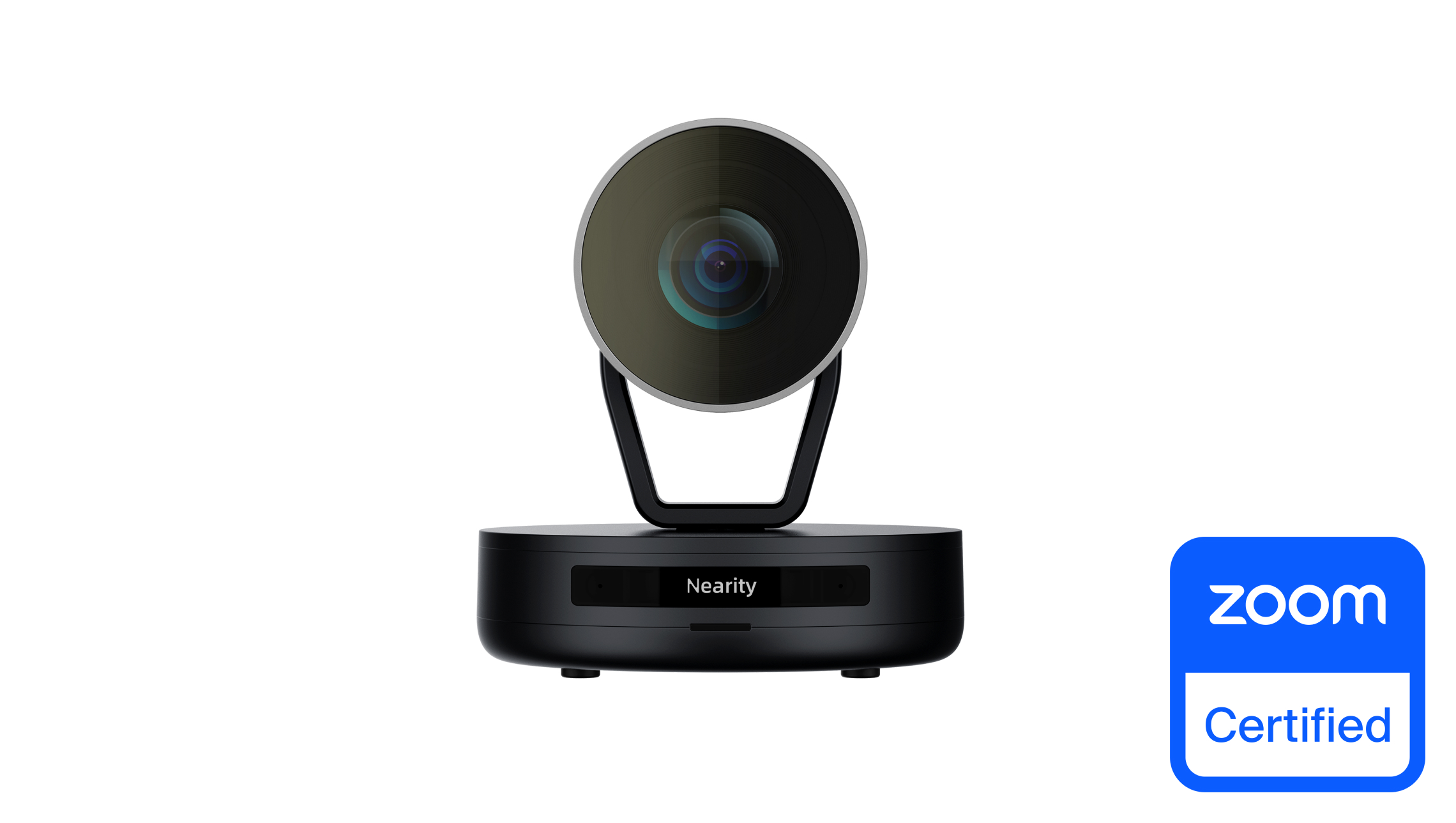
When it comes to clarity and versatility, the Nearity V415 has truly impressed me. This camera is built for dynamic environments where precision and flexibility are key, with the following details:
- 1/2.8" CMOS 8MP 4K Sensor
- Capture video resolutions up to UHD 4K30
- 5x Optical + 3x Digital Hybrid Zoom Lens
- HDMI, USB-C, and IP Streaming Output
- Smart Tracking and Auto-Framing
- 85 to 21° Horizontal Angle of View
- 350° Panning, ±30° Tilting
This HDMI Camera is Ideal For: Zoom meetings for large and medium conference rooms, classrooms, and any environment where a dynamic camera angle is essential.
Nearity V520D Duel-Lens PTZ Conference Camera
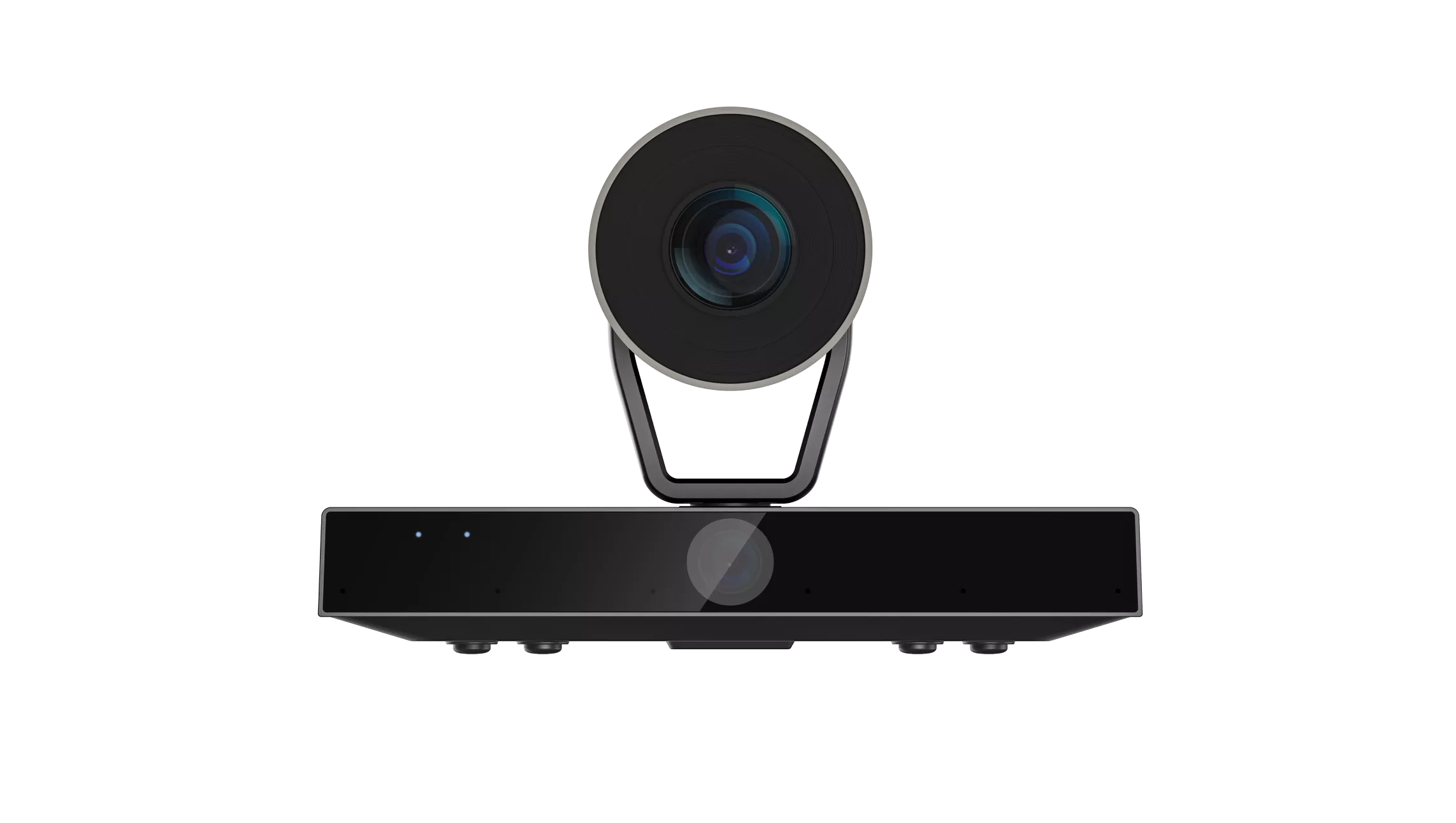
Next up is the Nearity V520D—a dual-lens powerhouse that’s designed with smart AI in mind. Its 20x zoom non-distortion lens and expansive field of view ensure you always look professional, with no loss of detail. The reasons may attract you are as follows:
- Dual-Lens PTZ Camera with Smart AI
- Sony CMOS Sensor with 10x Optical Zoom
- Capture up to 1080p resolution
- Simultaneous USB, HDMI, SDI & IP Output
- 80° PTZ Lens Field of View
- 120° Panoramic Lens Field of View
- H.264/MJPEG Video Compression
- Speaker Tracking and Auto-Tracking
- Dynamic Auto Framing
- Picture in Picture (PiP) Function
This HDMI Camera is Ideal For: Professional video conferences, hybrid meetings, and situations where multi-view capabilities are essential.
Nearity V540D 4K NDI PTZ Dual-Lens Camera
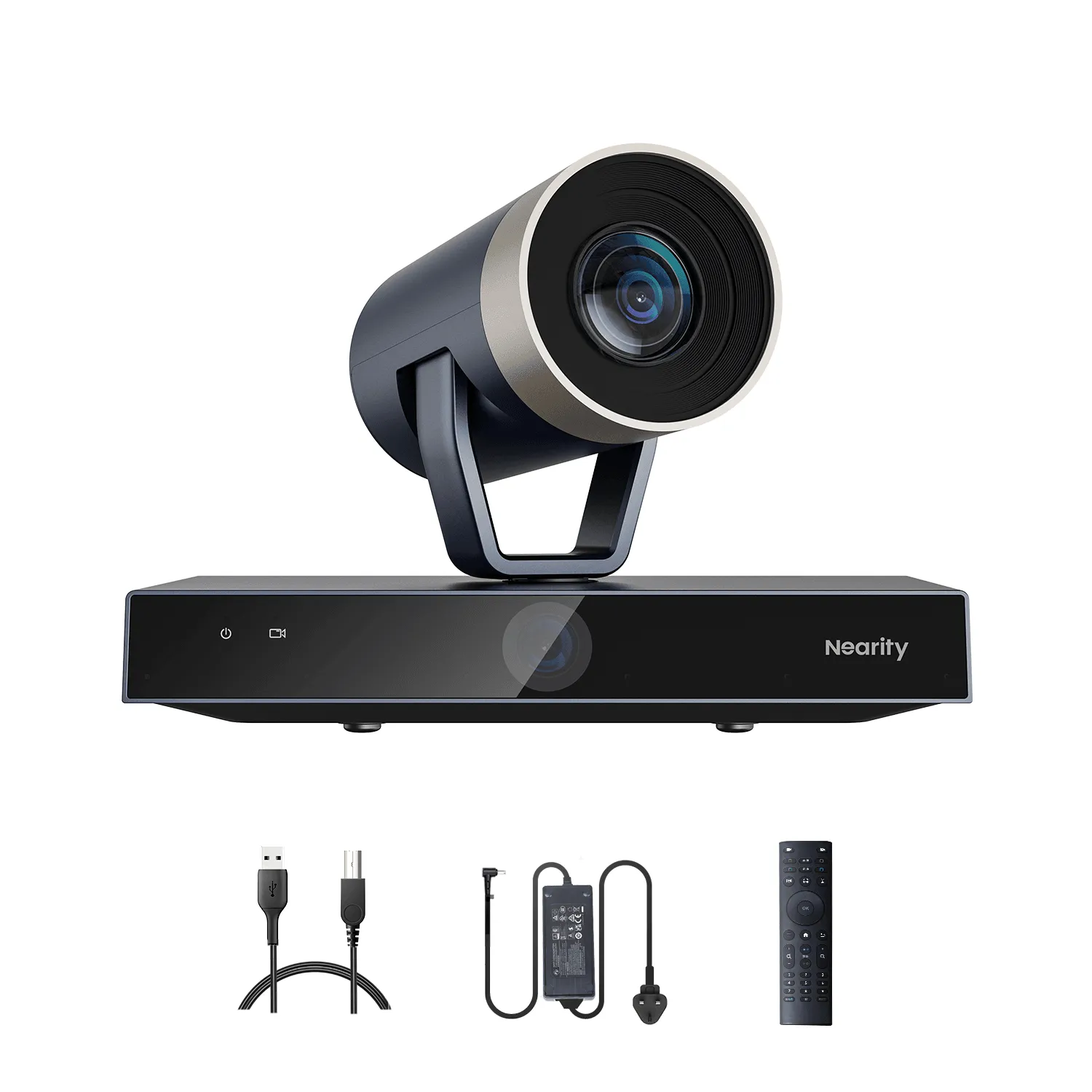
For those who demand the highest quality visuals, the Nearity V540D is an impressive option. Its 4K Ultra-HD capability and 40X zoom make it a standout choice for larger venues. The details are listed as follows:
- 4K Ultra-HD video with 40X hybrid zoom
- AI-powered smart tracking that follows subject movement
- Zooming following powered by AI, ensuring presenters are always centered
- Great compatibility with diverse HD outputs: NDI®|HX, SDI, HDMI, and USB
- Remote control via Visca over RS232/RS485/IP or NDI®|HX
- Audio input through Line-in and USB-C, and daisy-chaining with A20S via the PoE port
This Camera Zoom is Ideal For: Lecture halls, large conference rooms, and any environment where every detail counts.
AVer CAM570 4K Dual-Lens PTZ Conferencing Camera
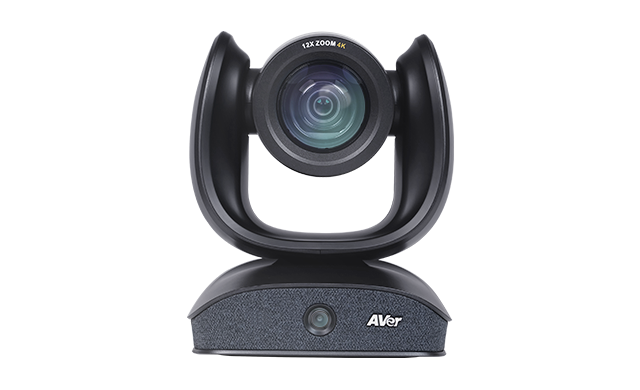
The AVer CAM570 offers a powerful combination of dual-lens technology and smart AI, delivering top-notch performance in any meeting scenario. It features:
- Dual-Lens PTZ Camera with integrated AI technology
- Sony 4K Exmor Sensor with 12x Optical Zoom
- Up to 4K30 resolution via USB output
- Simultaneous USB, HDMI, and IP outputs
- H.264 video compression for efficient streaming
- SmartSpeaker feature for automatic voice tracking
- Dynamic Auto Framing and Picture in Picture (PIP) function
- 95° Field of View and PoE support
This HDMI Conferencing Camera is Ideal For: Corporate boardrooms, educational webinars, and any setting where dynamic, interactive video is critical.
Sony SRG-X40UH 4K/HDMI/USB Optical 20x PTZ Camera

Sony is a brand I trust for quality, and the SRG-X40UH does not disappoint. This camera is engineered for precision and clarity, ideal for professional-grade video conferencing. It highlights the following descriptions:
- Up to UHD 4K30 via HDMI and 1080p60 via USB 3.0
- 1/2.5" Exmor R CMOS Sensor for enhanced image quality
- Multi-port connectivity: HDMI, USB-C, and LAN/VISCA
- Wide 70° angle of view with 20x optical zoom
- 340° pan and 110° tilt capabilities
- Low-light performance with a rating of 1.6 lux at 1/30s
- Runs on PoE+ or DC Power and includes an IR remote control
This HDMI PTZ Camera is Ideal For: Professional studios, high-end conference rooms, and any situation where both optical quality and versatile connectivity are needed.
Yealink UVC86 4K Dual-Eye Intelligent Tracking PTZ Camera
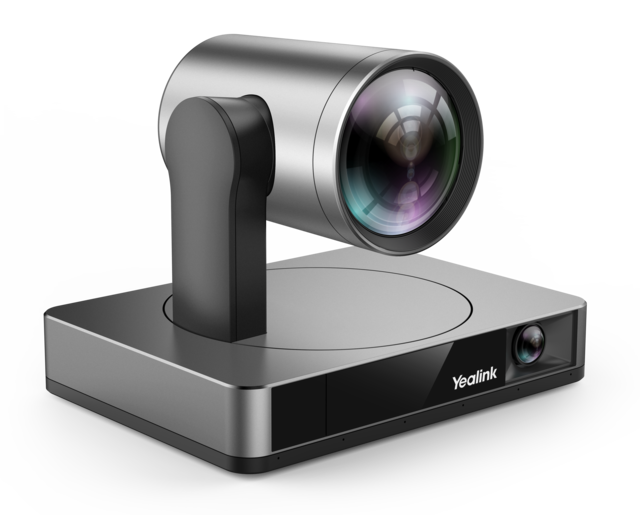
Last but not least, the Yealink UVC86 brings innovative dual-eye technology to the table, ensuring that every participant in your Zoom meeting is captured with precision. The details are as follows:
- 8MP 4K Image Sensor delivering up to 4K30 video
- Dual-Eye design: Panoramic and PTZ camera in one
- Auto Frame and advanced Speaker/Presenter Tracking features
- Multiple outputs: HDMI, USB Type-B, and RJ45
- 12x Optical Zoom with 1.7x Digital Zoom
- 90° Diagonal / 81° Horizontal Field of View
- Wide pan range (-100° to 100°) and versatile tilt range (-90° to 40°)
- 3.5mm Audio Line Input Port
- Electronic Lens Cap and Auto Image Flip functionality
- Kensington Security Lock for additional peace of mind
This HDMI PTZ Camera is Ideal For: Business meetings, interactive webinars, and any scenario where intelligent tracking and flexible video angles are required.
How to Connect HDMI Cameras to Your TV?
Connecting your HDMI camera to a TV might sound intimidating, especially if you’re new to this technology. I’ve been there—wondering if I was going to mess up my presentation or have a last-minute technical glitch. But trust me, once you know the steps, it’s a breeze!
Step-by-Step Guide: Connecting HDMI Conference to your TV
- Identify the HDMI Output on Your Camera: Check whether your camera has a standard, mini, or micro HDMI output. This is crucial because you may need an adapter if your camera’s port doesn’t match your TV’s HDMI input.
- Select the Right Cable/ Adapter:
- Standard to Standard: Use a high-speed HDMI cable that supports 4K if your camera and TV both have standard HDMI ports.
- Mini/Micro to Standard: Purchase an adapter that converts mini or micro HDMI to standard HDMI. Make sure it’s a high-quality adapter to prevent signal loss.
- Active HDMI Cables: If you’re dealing with long cable runs, consider an active HDMI cable to ensure the signal remains strong over the distance.
- Connect the Cable: Plug the HDMI cable into your camera’s output and then into the corresponding HDMI input on your TV. Some TVs have multiple HDMI ports, so note which one you’re using for easier troubleshooting later.
- Configure Your Camera Settings: Switch your camera to “HDMI output” mode if it doesn’t do so automatically. Most cameras have a settings menu where you can adjust the output resolution and other parameters. I always double-check these settings before a big meeting.
- Set Up Your TV: Use your TV remote to select the correct HDMI input channel. You should see the camera feed displayed almost immediately. If not, verify all connections and settings.
- Optimize the Display: Adjust the TV’s picture settings if necessary. Some TVs might have a “PC mode” or “Game mode” that reduces input lag, which can be beneficial for live streaming and interactive meetings.
HDMI Cameras Troubleshooting Tips
- No Signal? Double-check that both your camera and TV are powered on. Ensure the cable is securely connected and that the TV is set to the correct HDMI input.
- Low-Quality Video? Verify that your HDMI cable supports the resolution you’re trying to achieve (e.g., 4K). Sometimes a lower-quality cable can bottleneck data transfer.
- Lag or Audio Sync Issues? Some TVs process HDMI signals differently. In these cases, check your camera’s settings and your TV’s picture mode. Using an active HDMI cable can also help reduce lag.
For more detailed troubleshooting, read our comprehensive guide on How to Fix Video Conferencing Issues.
My Personal Experience of my HDMI Camera
I remember the first time I connected an HDMI camera to my TV for a Zoom call—I was nervous that the connection wouldn’t hold up during a critical meeting. However, after following these simple steps, I was pleasantly surprised by how smooth the transition was. Now, I always recommend having a backup adapter or cable on hand, just in case!
FAQ:
Over the years, I’ve encountered a bunch of questions from friends, colleagues, and even complete strangers about HDMI cameras for Zoom meetings. Here are some of the most frequently asked questions along with my answers:
Q1: What exactly does “HDMI” stand for and why is it important?
A: HDMI stands for High-Definition Multimedia Interface. It’s crucial because it allows high-quality video and audio to be transmitted over a single cable. This is especially important for Zoom meetings and live streams, where clarity and synchronization are key.
Q2: How do I know which HDMI output my camera supports?
A: Most cameras clearly label their HDMI ports (standard, mini, or micro). I always recommend checking the user manual or the manufacturer’s website for detailed specifications. If you’re still unsure, customer support is usually very helpful.
Q3: Can I use any HDMI cable with my camera for Zoom meetings?
A: Not exactly. You need a high-speed HDMI cable that supports the resolution (e.g., 4K) of your camera outputs. For mini or micro HDMI ports, you’ll need an appropriate adapter. Investing in a high-quality cable can prevent many common issues like signal loss or lag.
Q4: Do HDMI cameras work well in low-light conditions?
A: This depends on the camera’s sensor and lens quality. Always check the specifications for lux ratings if low-light performance is critical for your use.
Q5: How do HDMI cameras integrate with streaming platforms like Zoom?
A: HDMI cameras are often designed with multiple output options. They can stream directly to your computer via a capture card, or even connect to TVs and monitors as external displays. Many models support simultaneous outputs (HDMI, USB, IP) for versatile use in both streaming and recording scenarios.
Q6: What if I experience audio issues when using an HDMI camera?
A: Some HDMI connections might require you to adjust the audio settings on both the camera and the TV or computer. Ensure that the cable supports both audio and video. If issues persist, consider using a separate audio input source or consult the camera’s troubleshooting guide.
Q7: Is it possible to upgrade my existing setup without buying an entirely new camera?
A: Absolutely. Often, all you need is the right HDMI cable or adapter to connect your current camera to a higher-quality display or streaming device. Upgrading your cables and ensuring proper configuration can make a significant difference.
Final Thoughts
Choosing the best HDMI camera for your Zoom meetings isn’t just about picking a high-end device—it’s about finding the right match for your specific needs and setup. From understanding which HDMI connectors your camera uses to selecting the perfect cable and adapter, every detail counts in delivering a professional video experience.
I’ve personally tested many of these cameras and learned that even small upgrades in connectivity and resolution can have a huge impact on how you’re perceived in a meeting. Whether you’re hosting an interactive webinar, presenting in a boardroom, or simply trying to keep your online classes engaging, investing in a quality HDMI streaming camera is a decision you won’t regret.
Remember, a seamless video conferencing experience starts with the right tools and a bit of know-how. So, take your time, do your research, and choose a camera that fits your unique needs. And if you ever run into issues, there’s plenty of support available—both online and from the manufacturer’s customer service teams.
For further insights on enhancing your video conferencing setup, explore our post on our top products for Virtual Meetings.
Conclusion
In this comprehensive guide, I’ve walked you through every aspect of choosing, connecting, and optimizing HDMI cameras for Zoom meetings. From the technical breakdown of HDMI types to real-world reviews of the best models on the market, I hope you now feel more confident in your decision-making process.
The world of video conferencing is evolving rapidly, and so are the technologies behind it. Staying updated with the latest trends in HDMI cameras and streaming technology is key to maintaining a professional and engaging virtual presence. Whether you’re a seasoned professional or just getting started, I’m here to help you navigate the ever-changing landscape of video technology.
So, what are you waiting for? Upgrade your setup, test those connections, and let your next Zoom meeting shine with crystal-clear video and crisp audio. And as always, if you have any questions or need further assistance, feel free to drop a comment or reach out directly.
Looking for more tips on how to improve your video quality? Visit our series on Expert Video Conferencing Hacks for more ideas and step-by-step guides.
By following these guidelines and exploring the cameras discussed above—from the feature-packed Nearity series to the industry-trusted Sony and AVer models—you’re well on your way to hosting seamless, professional Zoom meetings. I hope this guide helps you find the perfect match for your needs and inspires you to get the most out of every virtual interaction.
Thank you for joining me on this journey through the world of HDMI cameras. Here’s to better, clearer, and more engaging virtual meetings in 2025 and beyond!









